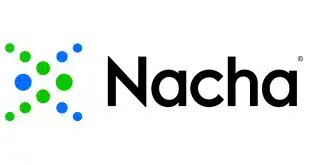Bitcoin and other cryptocurrencies have had a rough time in 2022, but a trend
toward mainstream adoption is gaining momentum.
Equities across the board, including Bitcoin, are massively down from their 2021 highs. Tech stocks, bonds, commodities—nothing seems safe from the current sentiment. But what does that mean for the long-term and short-term value and use of Bitcoin and other cryptocurrencies?
Like other equities in the space, there is little recourse until stability returns and investors, retail and otherwise, feel safe to reenter the markets. From my perspective, here’s what to look out for in the second half of 2022.
- Critical Mass Will Help Overcome a Reluctant Market
The volatility of cryptocurrency is played out daily in the news and on social media. Wild fluctuations, new coins and decentralized finance (DeFi) protocols, and the evolution of things like non-fungible tokens (NFTs), all amass clicks and views from every corner of the Internet. Yet, all of these stories lack explanation and put off many crypto-curious investors. With the fear of losing everything, it’s easy to understand why we see more hesitancy from investors.
Reaching mass adoption requires more than salacious news stories and promotion on social media. Increased participation depends on education and accessibility, which can only be achieved through faster, user-friendly applications, increased regulation, and a diversified ecosystem.
The market must also find a diverse set of investors, not just those looking to get a quick return or dabble in emerging technologies. Reaching critical mass serves to increase liquidity and build out a robust market infrastructure.
- Smarter Technology Will Improve the User Experience
In 2021, Bitcoin’s cumulative annual transfer volume surged 463% to reach $13.1 trillion. Ostensibly, that number is impressive. However, the BTC network processes roughly 10 transactions per second while Visa and Mastercard process several thousand transactions per second. That’s a problem.
But hopefully not for long.
Developers are working on Layer 2 protocols that will make smaller BTC payments faster and cheaper. And there are other blockchains and technologies on the horizon that could lower costs and improve speed. For example, the oft-delayed Ethereum 2.0 promises to drastically increase efficiency and throughput gains for the network.
Because of efforts like this, we expect to see new market segments emerge. According to a Cointelegraph report, we’ve already seen a 200% increase in alternative trading systems, a 120% increase in registered wealth-tech platforms, a 54% increase in infrastructure firms like blockchain-development platforms, and a 47% increase in crypto on-ramps and neobanks.
Throughout 2022, we also expect to see an increase in platforms and apps that focus on the user experience. Apps that can provide an easy, seamless experience with cryptocurrency and digital assets will position themselves as market leaders, especially those that build on faster and more secure infrastructure.
For casual users, this provides a more secure feeling and experience in using assets for their day-to-day interactions. And being able to pay for groceries, season tickets, or a late-night shopping purchase with crypto through an app provides value.
- Regulation And Clarity Will Bring Peace of Mind
Security is a chief concern for new adopters. Every story about NFTs being stolen or crypto going missing keeps new investors on the sideline. To overcome concerns, we need to implement stronger compliance programs. We can expect to see clearer guidance from regulators as time goes on and as they become more familiar with blockchain technologies.
Notably, President Biden announced in March an executive order that focused on crypto’s potential risks and benefits. The White House historically has never formally weighed in on crypto regulations, making this a significant development. As news of the executive order became public, Bitcoin experienced a price increase of nearly 9%. Additionally, the move encouraged California to implement a similar order, calling for state agencies to craft additional guidelines for digital currencies.
Decentralized finance has grown significantly since 2020, evolving from $700 million to $80 billion in transfer volume locked (TVL). This puts it at the end of the early-adoption stage. But to continue to grow, stability needs to become a core theme. Investors recently sold $133 million worth of Bitcoin investments. Moves like this are a prime example of lack of stability and trust in the market. To overcome this, regulations similar to those governing fiat must apply.
- A Diversified Market Will Capture Greater Interest
Bitcoin makes up about 35% of the total $2-trillion crypto market cap, but it used to make up around 70% of the market. The rise of altcoins, such as Eth, Cardano, Polkadot, Ripple, and countless other meme coins, are making up more and more of the market. Some of these coins tout functionalities superior to, or at least different from, Bitcoin. Others target niches such as gaming or collecting. Many investors are looking for the next “big thing” and see potential in altcoins, taking their investments with them.
Innovation in fintech is likely to find an increased focus on retail investors as the market continues to evolve. As these digital currencies become more prominent, they are starting to develop real utility and value. For example, the gaming industry has seen a wave of developers create in-game tokens to be used for exclusive items such as collectibles and avatars. The token has value because the item in the game has value.
Investors not looking for an in-game item can still benefit from a diversified market through the offering of exchange-traded funds (ETFs). While still awaiting decisions from the SEC, crypto ETFs provide a way to bundle various digital assets into one investment class. This would increase market adoption exponentially. Those wanting to invest but not knowing where could spread out their money between different cryptocurrencies. This would require additional regulations that aren’t currently in place for crypto, but these would be welcomed by investors.
Acceleration is Key
The world is focused on acceleration in automation, acceleration in education, and acceleration in use cases. Processes for onboarding and trading crypto are becoming more streamlined and efficient. New use cases in gaming and payments are pushing the technology forward. As the market decreases its emphasis on investing and returns, the focus will shift toward solving customer challenges and providing real tangible benefits.
There will be greater integration, and perhaps more niche markets,
but in the end, these trends will create greater mainstream awareness and adoption.
—Tom Pageler is chief executive of Prime Trust LLC, Las Vegas.





